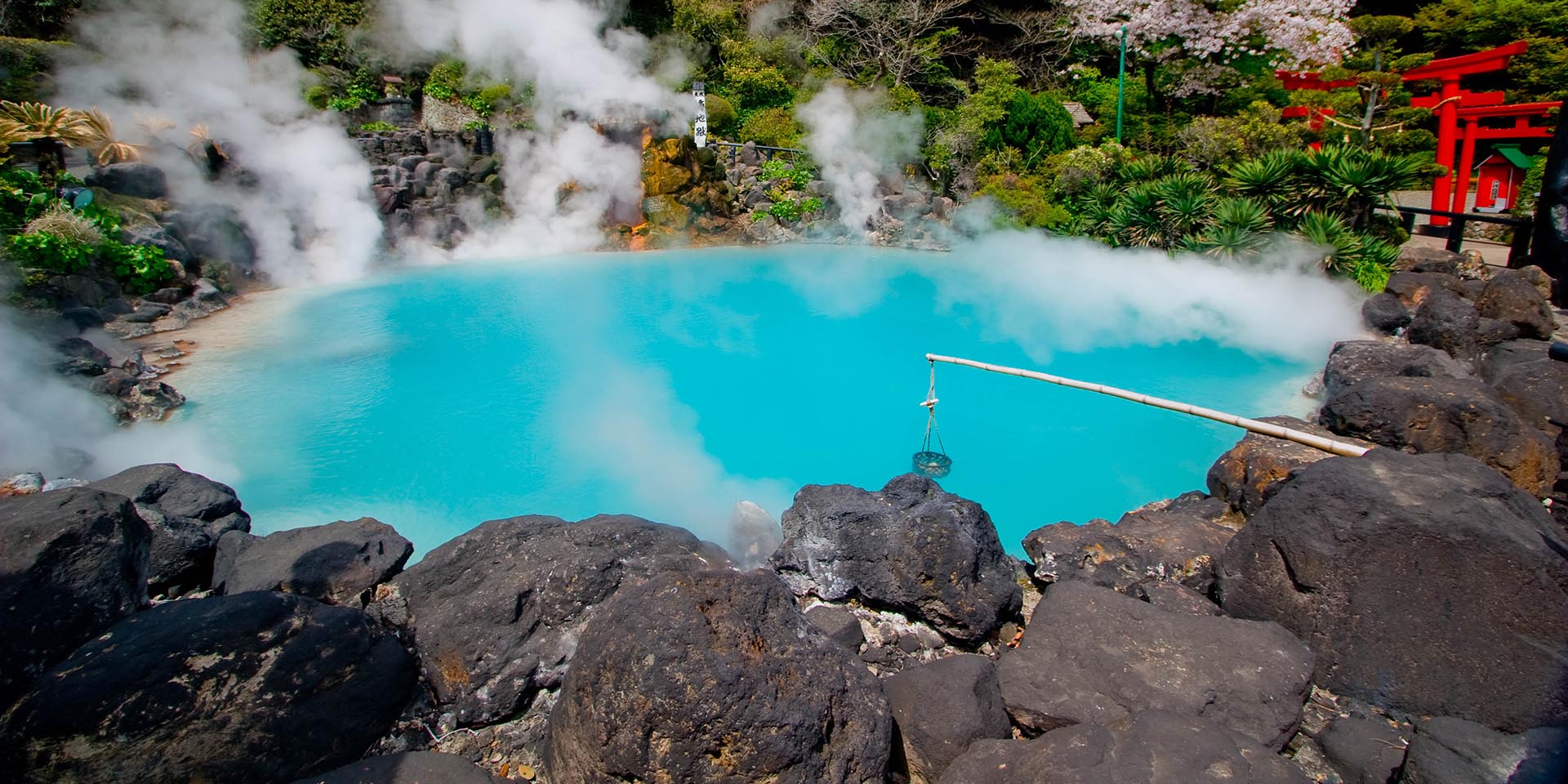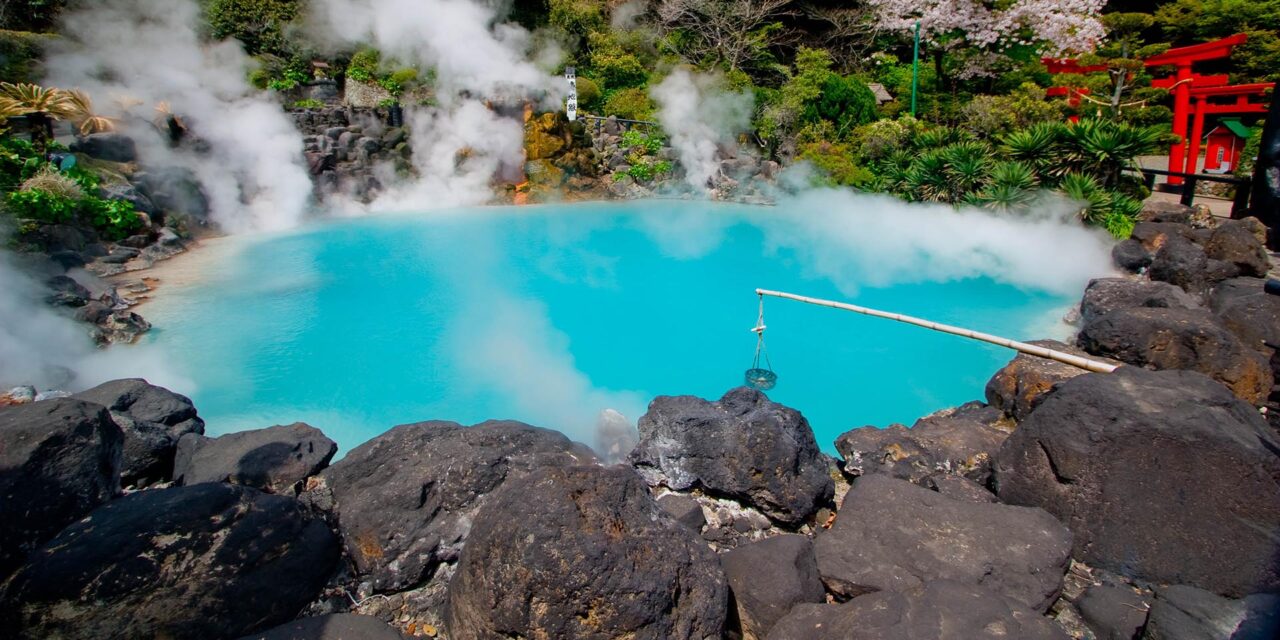WRITTEN BY
Editor, Travelogues
PUBLISHED ON
October 27, 2017
LOCATION
Japan
Much of the Japan traveler’s time is spent searching for that perfect onsen in that perfect ryokan. Well, dips in these pools are inadvisable the Eight Pools of Hell, or the Hells of Beppu, are better seen than felt.
From crocodiles to boiling blue water, these strange natural pools are both beautiful and frightening. Found in the oft-overlooked Beppu in Oita Prefecture, these hells, or jigoku, are eerie and unique.
Oniishibozu Jigoku
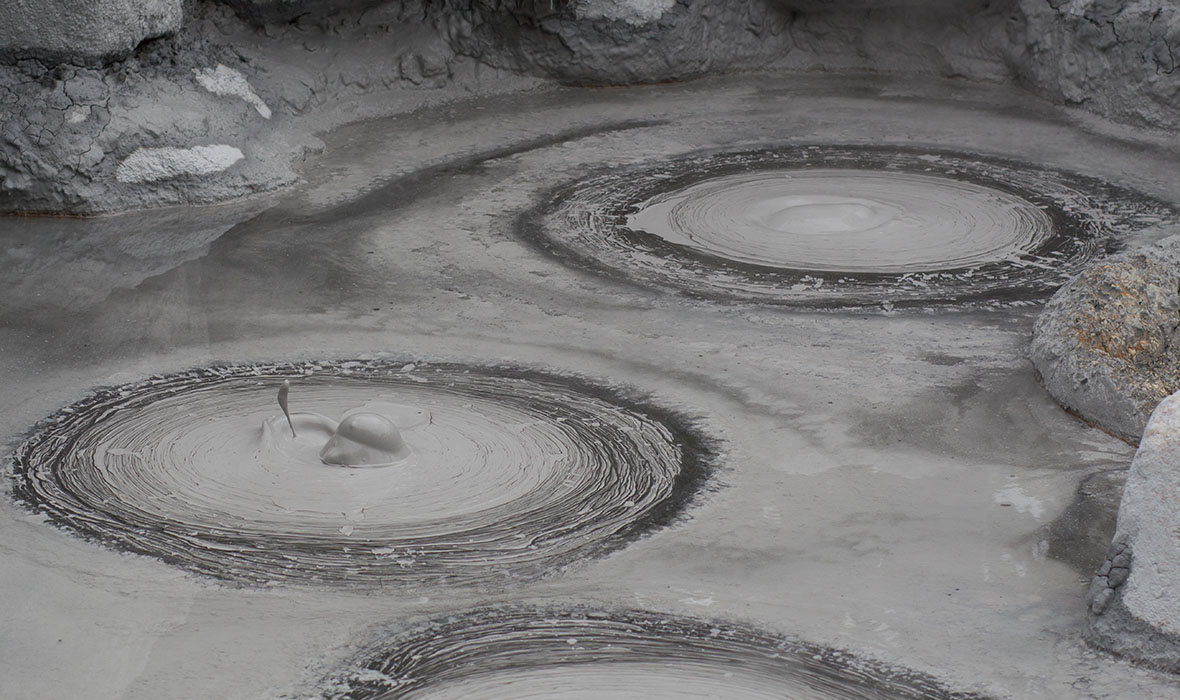
With an average temperature of around 98 degrees Celsius (210F), much too hot for baths of any kind, this spring is named after its strange gray mud bubbles that are said to resemble the shaved heads of monks. A public bath with multiple pools is adjacent to this tiny hell – which is only about four meters wide – along with complimentary mineral-enriched foot baths in clear water. The boiling mud makes for some interesting shapes once the bubbles have burst. It is said these pools were given the title “hells” in order to warn people away, but it would appear that it has had the opposite effect, with tourists and pilgrims traveling to Beppu all year.
Umi Jigoku
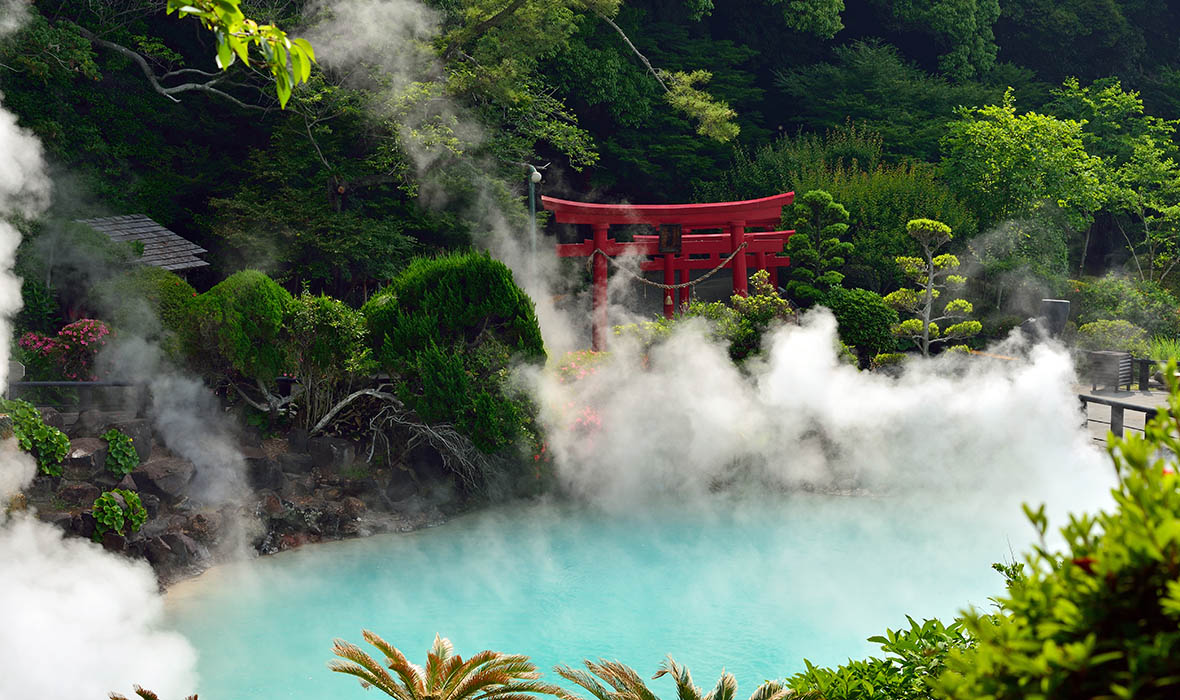
ABOVE: Umi Jigoku, which includes a foot soak.
This aqua blue pond was created by the explosion of Mount Tsurumi 300 years ago, the name “umi” meaning sea, due to the pond’s blue water. Now, it may look a bit like the sea, but it’s a scalding 97 degrees Celsius (208F). The water is cooled and used for ashi-yu, allowing travelers to enjoy a refreshing foot soak in the spring’s otherwise boiling temperatures. Nestled in Umi Jigoku’s gardens are smaller, orange-colored hells with clusters of lotus flowers scattered throughout a clear-water pond.
Chinoike Jigoku
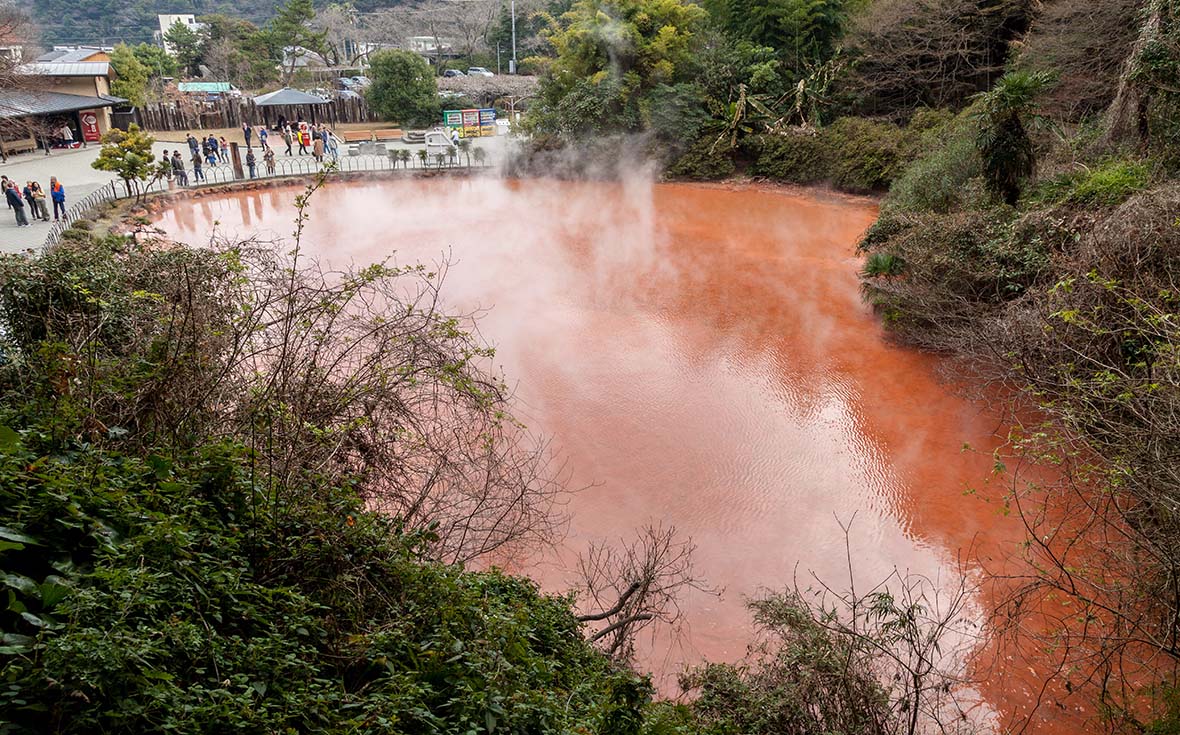
ABOVE: One of the darker pools, the Chinoike Jigoku stands for “bloody pond hell.”
The black sheep among the exhibition of already peculiar pools, the Chinoike Jigoku provides a striking contrast to the rest of the springs in both composition and history. Translated to mean “bloody pond hell,” its boiling waters – rich in iron oxide – envelope the pool in a deep red hue. Mentioned in hundreds of sources for its stark appearance, Buddhists believe this pond resembles the nightmarish underworld. With an average temperature of 77 degrees Celsius, the spring’s history is as hellish as its muddy depths, with apocryphal stories of boiling, but today, it’s frequented by lines of tourists and pilgrims.
Shiraike Jigoku
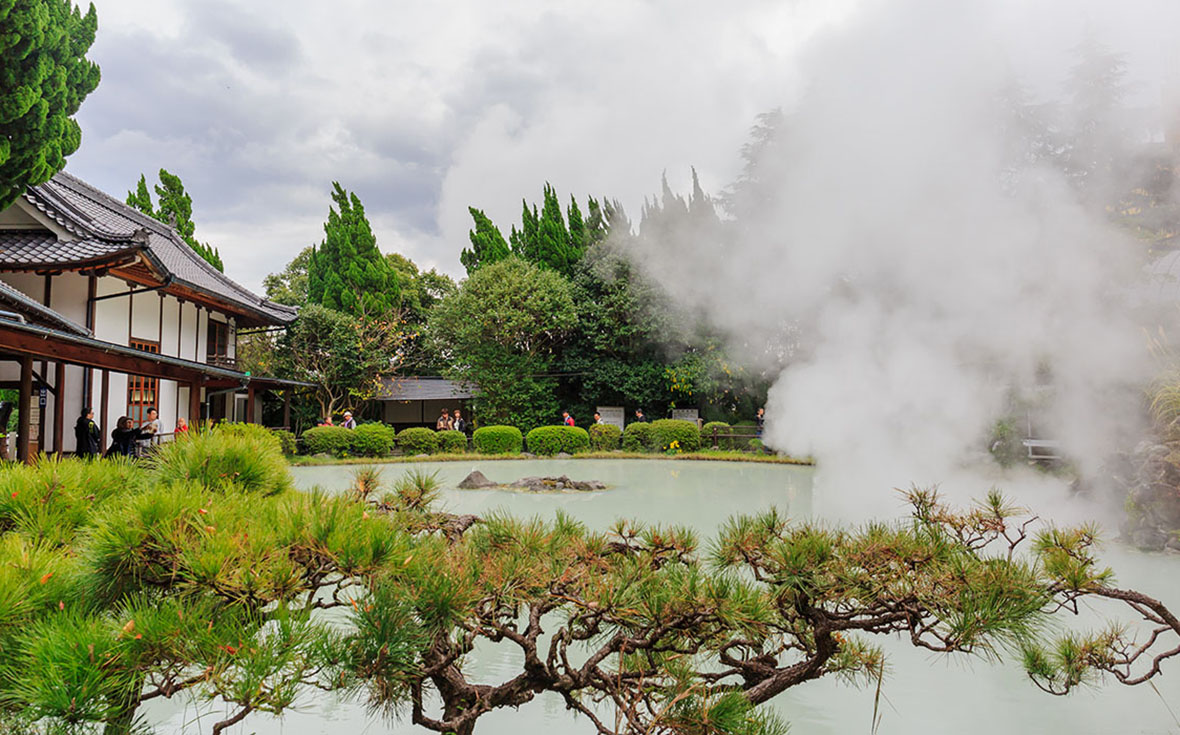
ABOVE: The heat from the Shiraike Jigoku warms a nearby aquarium of tropical fish.
Surrounded by a traditional Japanese-style garden is the “white pond hell,” tinged with a foggy hue and surging with steaming, milky water. Transparent when discharged, the coloring of the spring is a result of the mixture of boric acid, salt, sodium silicate and calcium in the water, altering the shading of the colorless water as the temperature and pressure levels subside. Also, onsite is a small – albeit somewhat dilapidated – geothermal aquarium which houses large exotic fish from the Amazon and other equatorial regions. It is heated, of course, by the Shiraike Jigoku.
Tatsumaki Jigoku
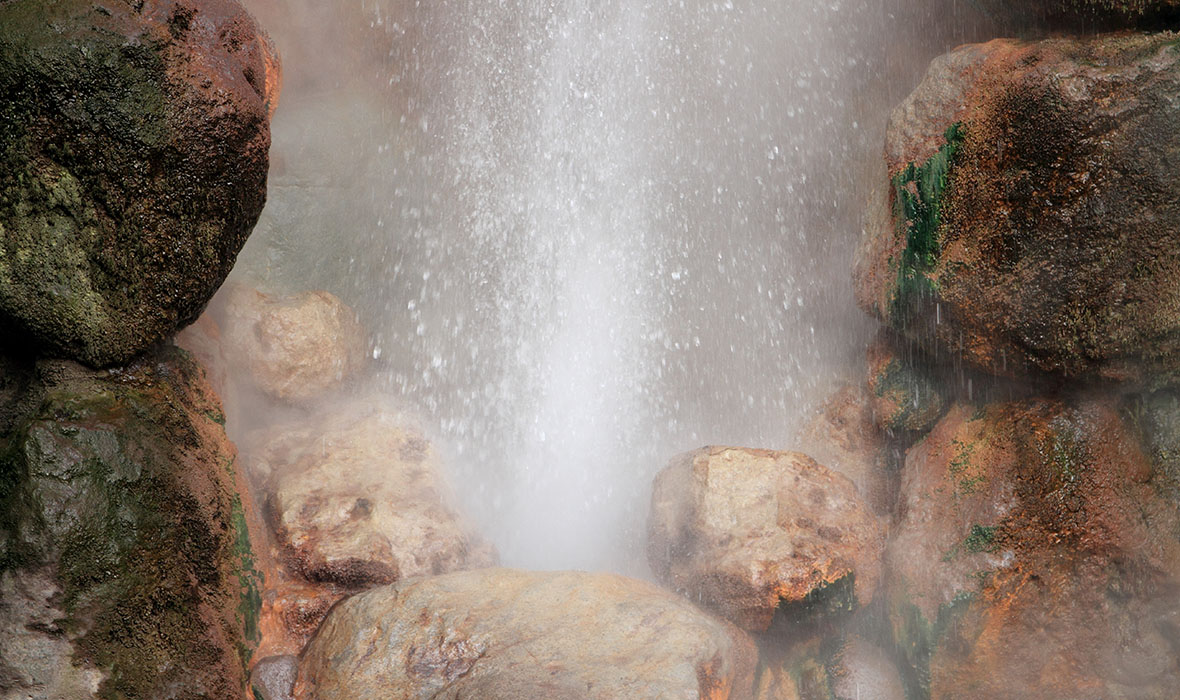
ABOVE: A stone roof prevents the Tatsumaki Jigoku from reaching its full height.
The Tatsumaki Jigoku is the only spring featuring a powerful boiling geyser, periodically erupting from the ground with enough strength to burst over 50 meters. The water is kept down with a stone roof, which stops the gushing hot water from reaching its full height. A short walking trail leads to a forested slope in the back of the pool’s grounds.
Oniyama Jigoku
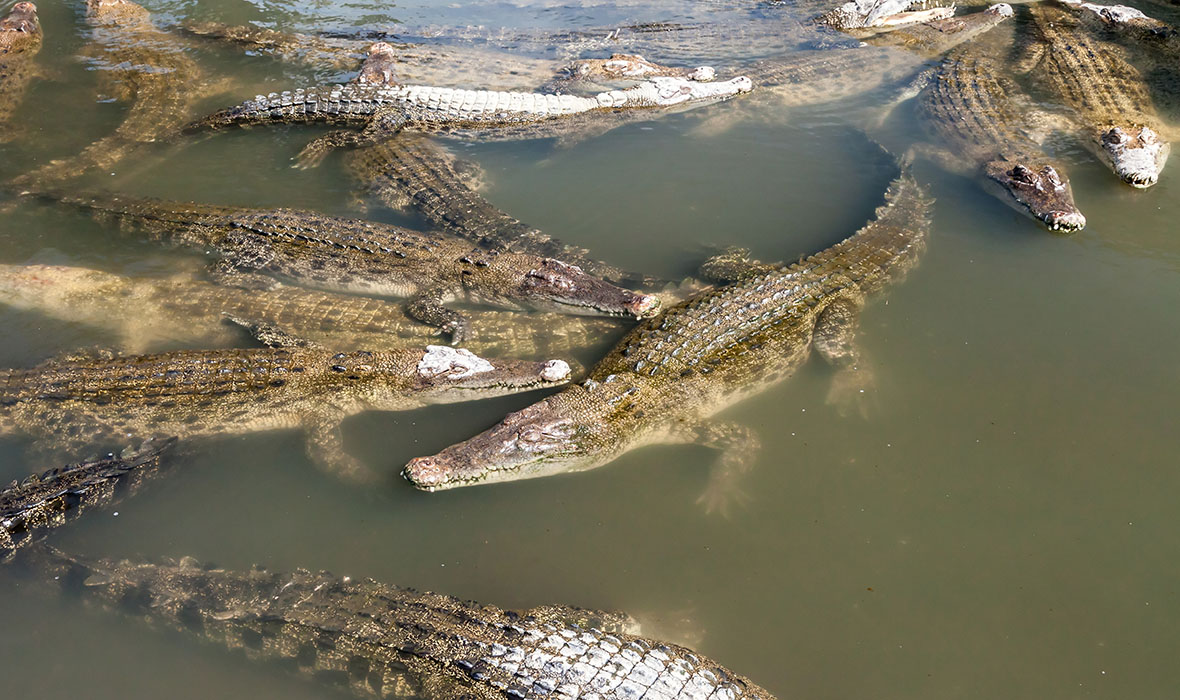
ABOVE: The heat of the Oniyama Jigoku warms pools for more than 80 crocodiles.
Known as the “monster mountain hell”, the Oniyama Jigoku comes complete with demons – well, reptiles. This jigoku takes advantage of the naturally high-temperature onsen water to breed and house over 80 crocodiles on site. This “Crocodile Jigoku” spring started its breeding in the Taisho period (1912 to 1926) and was successful despite the cold Beppu climate. Crocodile feedings – where the beasts jump for their meal – are held Saturdays and Sundays.
Kamado Jigoku
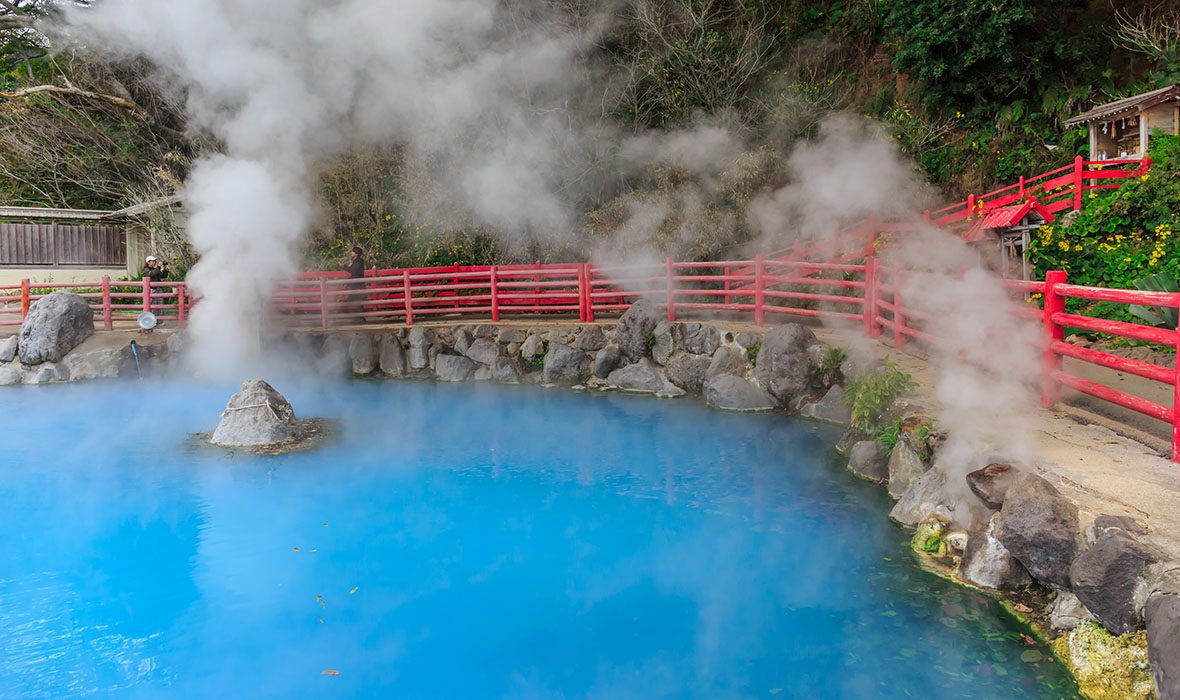
ABOVE: There are six boiling pools to the “cooking pot hell.”
This “cooking pot hell” features six boiling ponds visitors can admire while indulging in sand footbaths and breathing in vaporized hot steam. The name of this hell originates from an ancient myth in which steamed rice was cooked and discharged as an offering to Ujigami at the Kamado Hachimangu Shrine Festival. Each pond is different, ranging from melting silica and cobalt blue coloring to chestnut brown clay – with 90 degree Celsius steam. The symbol of the Kamado Jigoku, a flashy demon statue, is showcased atop the bedrock of the second pond.
Yama Jigoku
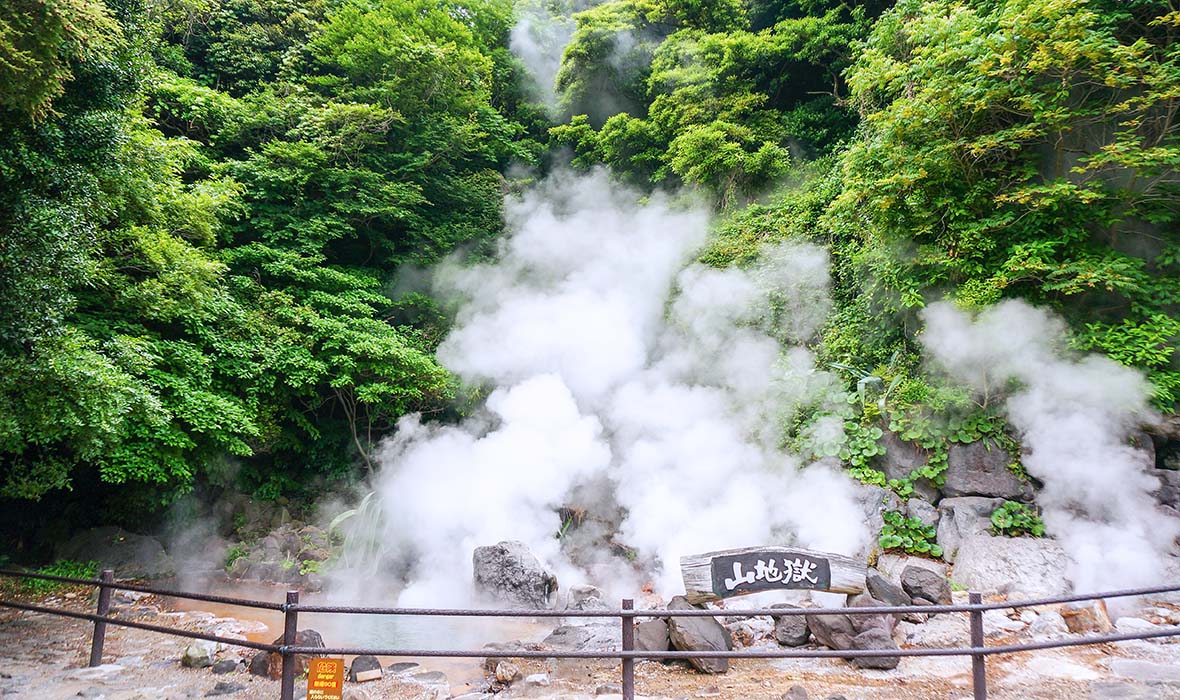
ABOVE: The Yama Jigoku heats a zoo-like area filled with tropical animals.
The Yama Jigoku, like the Shiraike Jigoku, is less known for its attributes than for what’s around it. Orange and green-looking waters produce plumes of steam, but the Yama Jigoku is also where visitors will find a zoo-like collection of animals – including monkeys, miniature horses, and hippos. The heat of this “mountain hell” allows Beppu to feature tropical animals throughout the year.

